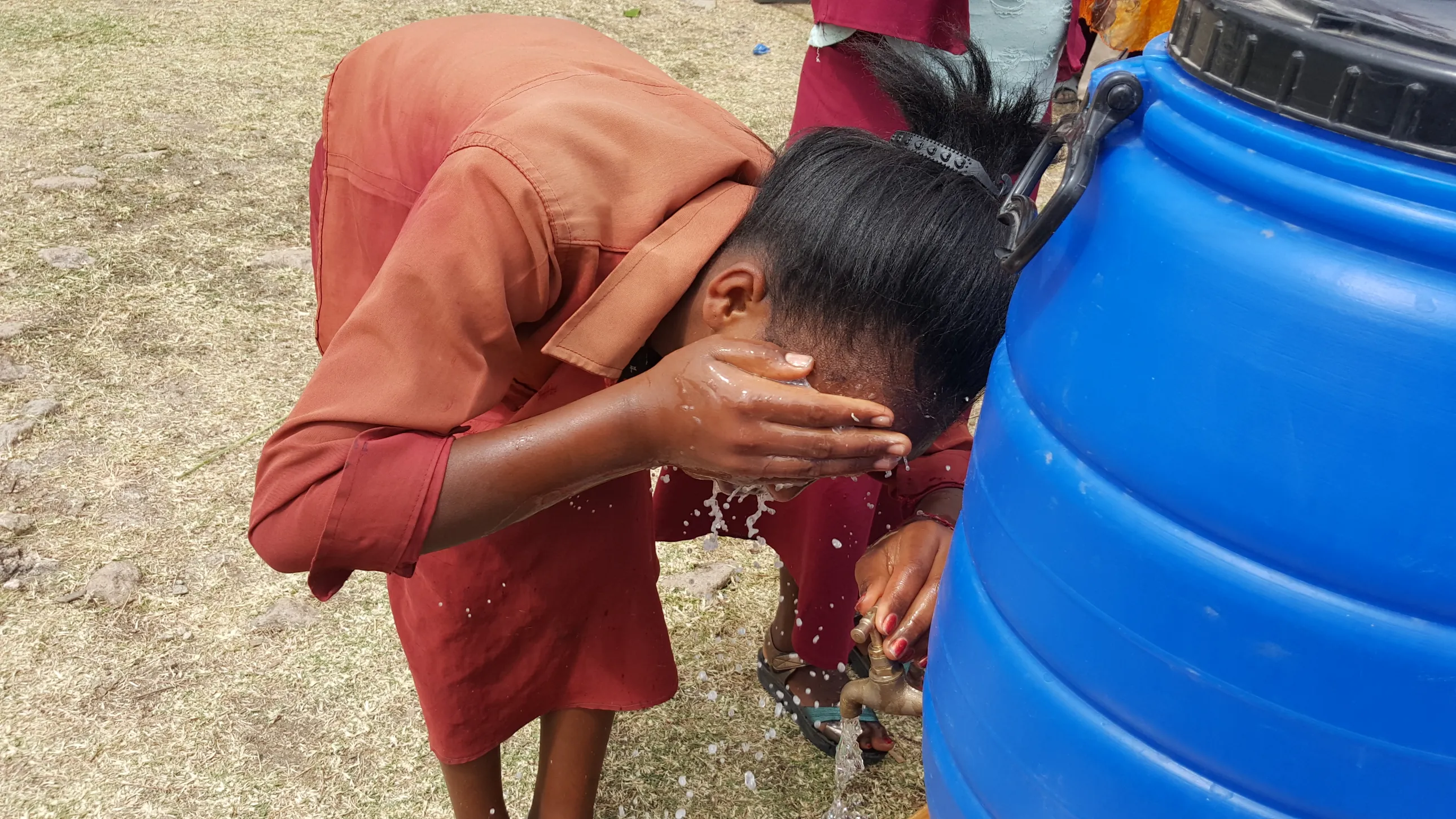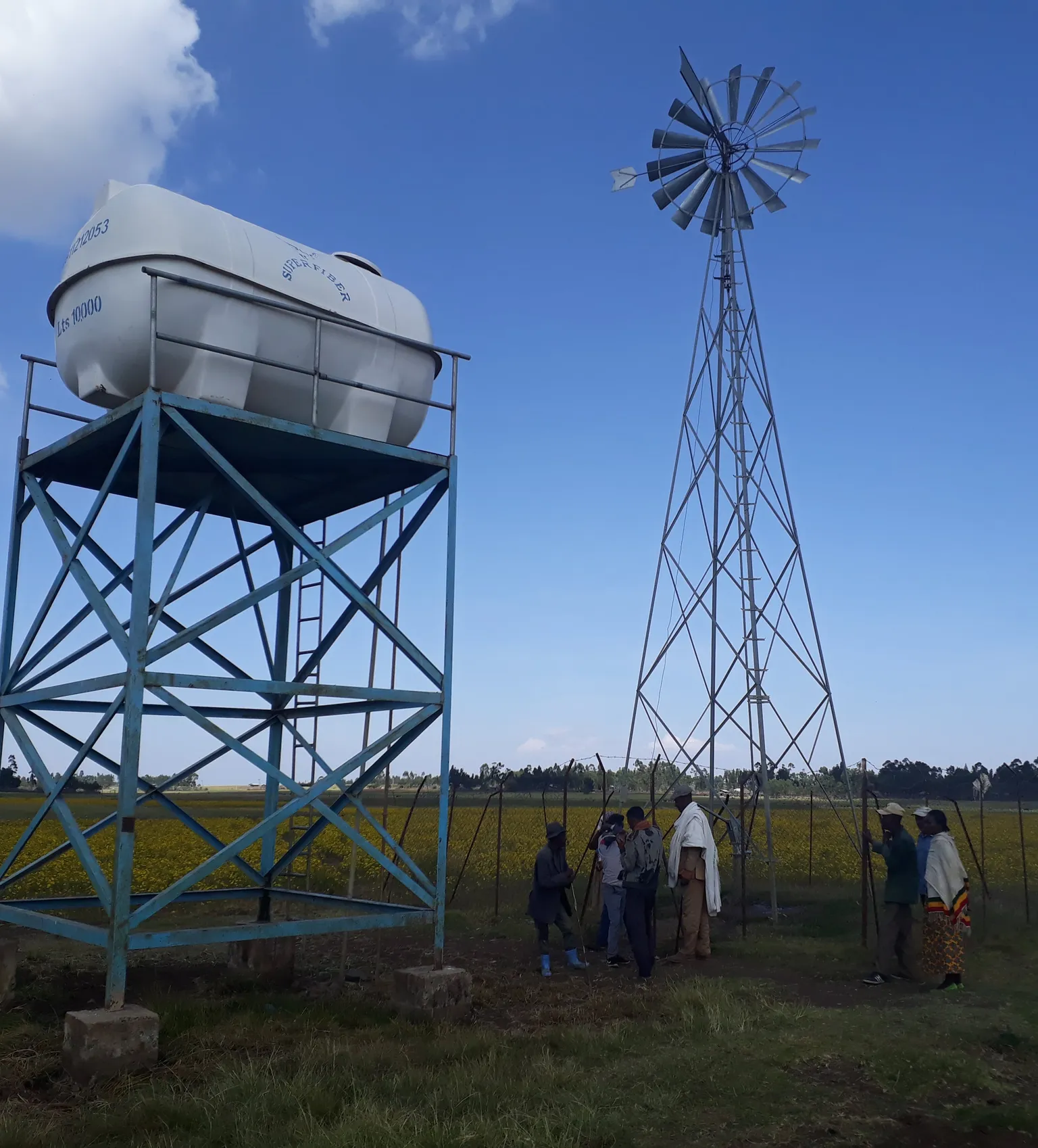WASH for Trachoma Elimination (WASH Tra)
Ethiopia,
concluded

SNV's WASH for Trachoma Elimination (WASHTra) project contributes to the reduction of trachoma through the promotion of sustained and enhanced practices of facial cleanliness and handwashing in communities.
WASH for Trachoma Elimination (WASH Tra) will contribute in the reduction of Trachomatous inflammation – follicular (TF) to <5% through sustained change in enhanced facial cleanliness and handwashing practices of the community, and use of improved sanitation and integration/mainstreaming of trachoma and WASH interventions.
The project is implemented in seven woredas of Oromia region where prevalence of both active trachoma (41%) in children aged 1-9 years and trichiasis (2.8%) in adults aged 15 years is above accounts.
Implementation of trachoma control activities is prioritised in communities where the prevalence of active trachoma in children aged 1–9 years is 10% or higher and where the prevalence of trichiasis in people aged 15 years and over is 1% or higher.
2013-14 National Survey on Blindness, Low Vision and Trachoma, the prevalence of blindness was 1.6% and low vision 3.7%, one of the highest prevalence rates in the world. However, it is estimated that about 90% of cases of blindness in Ethiopia are avoidable.
The implementation strategy seeks to find a balance between the facial cleanliness and Environmental Improvements (F&E) programme that effectively supports achievement of the Oromia region’s trachoma elimination goal.
Strategy
The project follows strategies
Partnership: in collaboration with the government (national, regional, zonal and woreda), key partners and stakeholders (communities, schools, private sector, TVETs, NGOs) work to maximise the project outcomes.
Community involvement: community members are mobilised to establish WASH committees, contribute labour and locally available materials for hardware activities and provide maintenance for facilities.
Capacity strengthening: to improve overall project planning, implementation and monitoring, and technical support (to kebele level development committees, WASHCOs, PLSP and schools), SNV works on system strengthening and capacity development with regional, zonal and woreda WASH teams.
Social behavioural change communication (SBCC): SBCC approach to bring sustainable change at individual, community and societal levels regarding hand and face washing. SBCC materials are developed, distributed, and used in campaigns and various events.
Knowledge management: SNV will collect and document best practices, and share learning with the wider sector, working with research institutions and networks.
Community-Led Total Sanitation and Hygiene (CLTSH): is adopted to facilitate the community change process so that the local community realise the negative effects of open defecation and decides to stop it through collective analysis of its own sanitation situation and profile, is called ”triggering”.
Sanitation marketing: SNV empowers and establishes viable sanitation marketing centres to provide improved sanitation and hygiene products and services.



